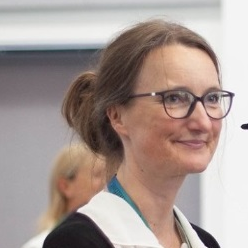Applications of Speech and Language Technologies in Healthcare
A special issue of Applied Sciences (ISSN 2076-3417). This special issue belongs to the section "Acoustics and Vibrations".
Deadline for manuscript submissions: closed (31 October 2022) | Viewed by 42000
Special Issue Editors
Interests: speech analysis, processing, and synthesis; signal processing; prosody; spoken language resources; esophageal speech; voice conversion; speaker characterization; technologies for oral disabilities; silent speech interfaces
Interests: clinical applications of speech technology; silent speech interfaces; neuroprosthetics; speech synthesis; speech processing; automatic speaker verification; speech biometric
Special Issue Information
Dear Colleagues,
Speech and language technologies (SLTs) have experienced a major boom in recent years. The use of voice to interact with machines is no longer a Sci-Fi dream, but a reality. We are currently experiencing an explosion in the use of virtual assistants and other speech-enabled devices that incorporate these technologies. The applications of speech technologies in different fields are innumerable. Most of the existing commercial speech-enabled systems are used at home and in cars (for example, virtual assistants and smart speakers). In addition, these technologies are already being used extensively in the entertainment industry (for subtitling and automatic translation in multimedia channels, social networks, video games, etc.).
Unfortunately, people with speech and language impairments often have difficulties when using these technologies, which aggravates the stigmatization of this population. Hence, it is important to take into account the special needs and characteristics of this sector of society when developing these technologies.
Apart from the abovementioned applications, another use of SLTs is in the form of assistive technology to help people with speech impairments to communicate. Furthermore, speech-based diagnoses of certain voice and respiratory pathologies (e.g., dysphonia, vocal fold nodules, COVID-19, etc.) and, even, certain neurological disorders, such as Alzheimer’s and Parkinson’s disease, have recently been shown to be possible. In addition, new communication interfaces with great potential are emerging, such as silent speech interfaces.
In this Special Issue, we attempt to collect relevant contributions in the development of speech and language technologies focused on improving the integration of people with speech impairments in society, as well as for the detection and monitoring of pathologies or diseases. We also intend to attract studies on the development of applications for voice professionals in the clinical field.
Relevant research topics include (but are not limited to):
- Speech and language technologies for augmentative and alternative communication (AAC);
- Silent speech interfaces;
- Voice conversion (VC) and text-to-speech (TTS) systems for speech restoration;
- Automatic speech recognition for people with speech impairments;
- Diagnosis and monitoring of voice disorders and other respiratory diseases;
- Speech-based diagnosis and assessment of neurological disorders;
- Personalization of speech tools for people with speech impairments;
- Voice banking initiatives;
- Tools and software for speech therapists and clinicians.
Dr. Inma Hernaez Rioja
Dr. José A. González-López
Dr. Heidi Christensen
Guest Editors
Manuscript Submission Information
Manuscripts should be submitted online at www.mdpi.com by registering and logging in to this website. Once you are registered, click here to go to the submission form. Manuscripts can be submitted until the deadline. All submissions that pass pre-check are peer-reviewed. Accepted papers will be published continuously in the journal (as soon as accepted) and will be listed together on the special issue website. Research articles, review articles as well as short communications are invited. For planned papers, a title and short abstract (about 250 words) can be sent to the Editorial Office for assessment.
Submitted manuscripts should not have been published previously, nor be under consideration for publication elsewhere (except conference proceedings papers). All manuscripts are thoroughly refereed through a single-blind peer-review process. A guide for authors and other relevant information for submission of manuscripts is available on the Instructions for Authors page. Applied Sciences is an international peer-reviewed open access semimonthly journal published by MDPI.
Please visit the Instructions for Authors page before submitting a manuscript. The Article Processing Charge (APC) for publication in this open access journal is 2400 CHF (Swiss Francs). Submitted papers should be well formatted and use good English. Authors may use MDPI's English editing service prior to publication or during author revisions.
Keywords
- speech analysis
- speech processing
- speech synthesis
- spoken language resources
- voice conversion
- speaker characterization
- technologies for oral disabilities
- silent speech interfaces
- automatic speech recognition
- dysartric speech
- esophageal speech
- augmentative and alternative communication
- silent speech interfaces
- neuroprosthetics
Benefits of Publishing in a Special Issue
- Ease of navigation: Grouping papers by topic helps scholars navigate broad scope journals more efficiently.
- Greater discoverability: Special Issues support the reach and impact of scientific research. Articles in Special Issues are more discoverable and cited more frequently.
- Expansion of research network: Special Issues facilitate connections among authors, fostering scientific collaborations.
- External promotion: Articles in Special Issues are often promoted through the journal's social media, increasing their visibility.
- Reprint: MDPI Books provides the opportunity to republish successful Special Issues in book format, both online and in print.
Further information on MDPI's Special Issue policies can be found here.







